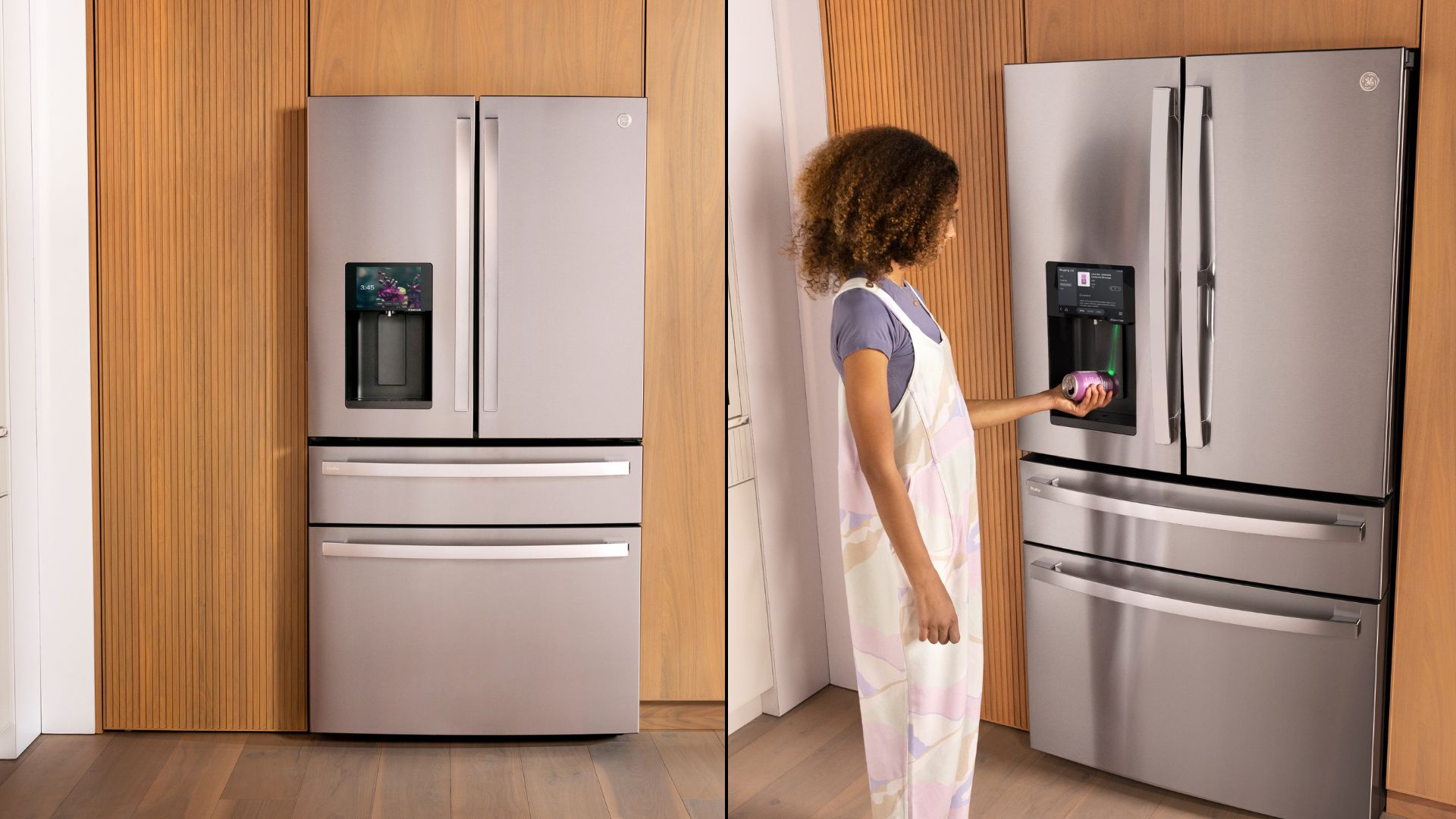Tom's Guide Verdict
The Xperia X Compact has a beautiful screen and amazing battery life. But its camera doesn't live up to Sony's claims of blur-free photos.
Pros
- +
Bright display
- +
Excellent battery life
- +
Good for small hands
Cons
- -
Camera disappoints in low light
- -
Sound could be better
- -
Smudge-prone design
Why you can trust Tom's Guide
The lure of Sony's Xperia X Compact lies entirely with its camera — a 23-megapixel shooter that also offers five-axis image stabilization. The promise is that the various camera features, which include predictive autofocus, will lead to less blurry shots. The reality, in our testing, fell short of that. Still, the $499 Xperia X Compact offers other benefits — namely a gorgeous 4.6-inch screen and a long-lasting battery — that bolster its appeal.
Design
The Xperia X Compact has a simple but chic look. Its curved glass makes for more rounded edges than you'd find on other, more blocky Xperia phones. Surprisingly, it was very comfortable to hold.
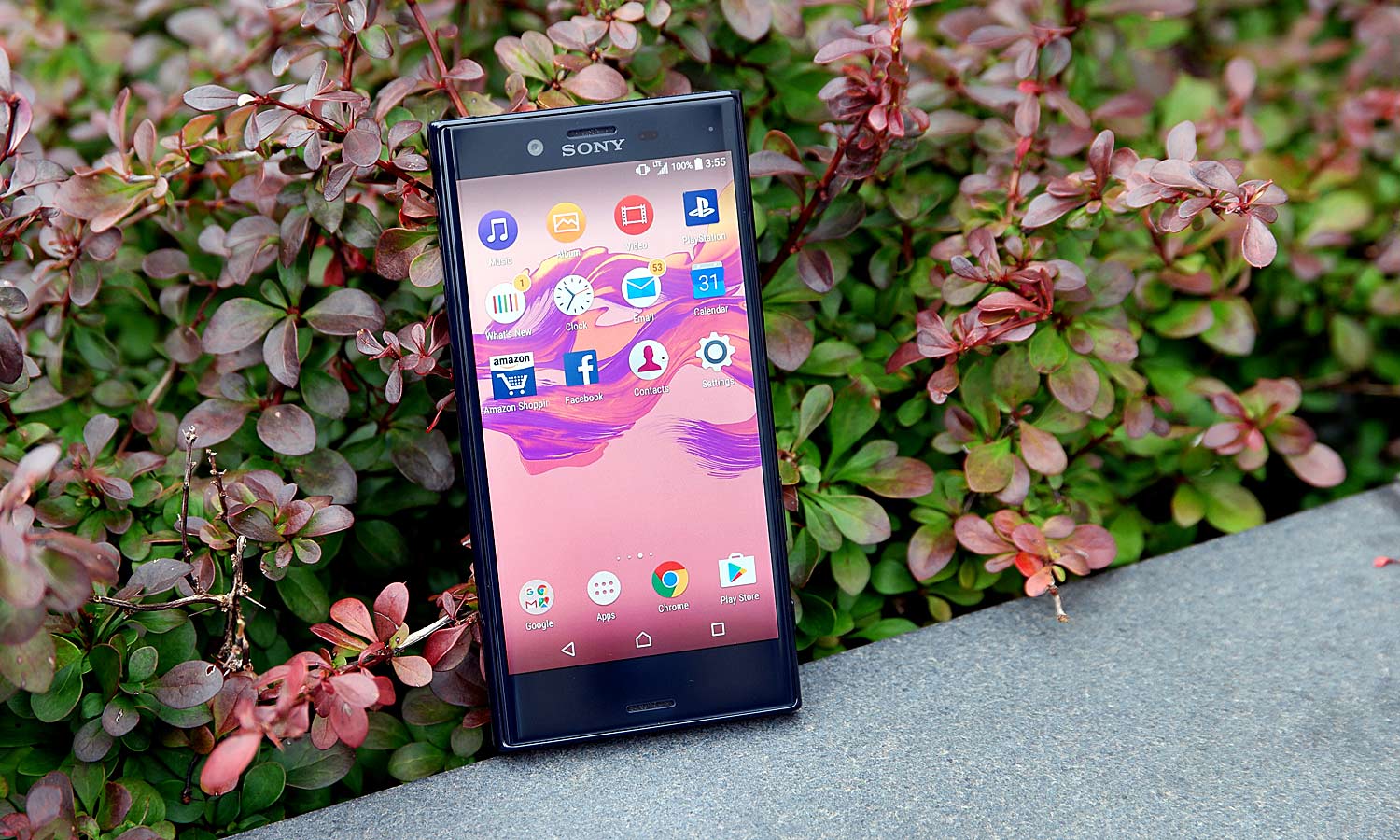
Measuring 5.1 x 2.6 x 0.4 inches without a case, the Xperia X Compact fit well in my small hands and even in the small pockets that are usually made for women's pants. The phone has some weight to it, at 4.75 ounces. In contrast, the 4-inch iPhone SE weighs about 3.99 ounces, while the 4.7-inch iPhone 7 is slightly heavier at 4.87 ounces. Unfortunately, Xperia X Compact's shiny body is prone to smudges that I couldn't completely wipe off, even with a lens cloth. The phone we tested was black, but Sony also offers white and blue models.
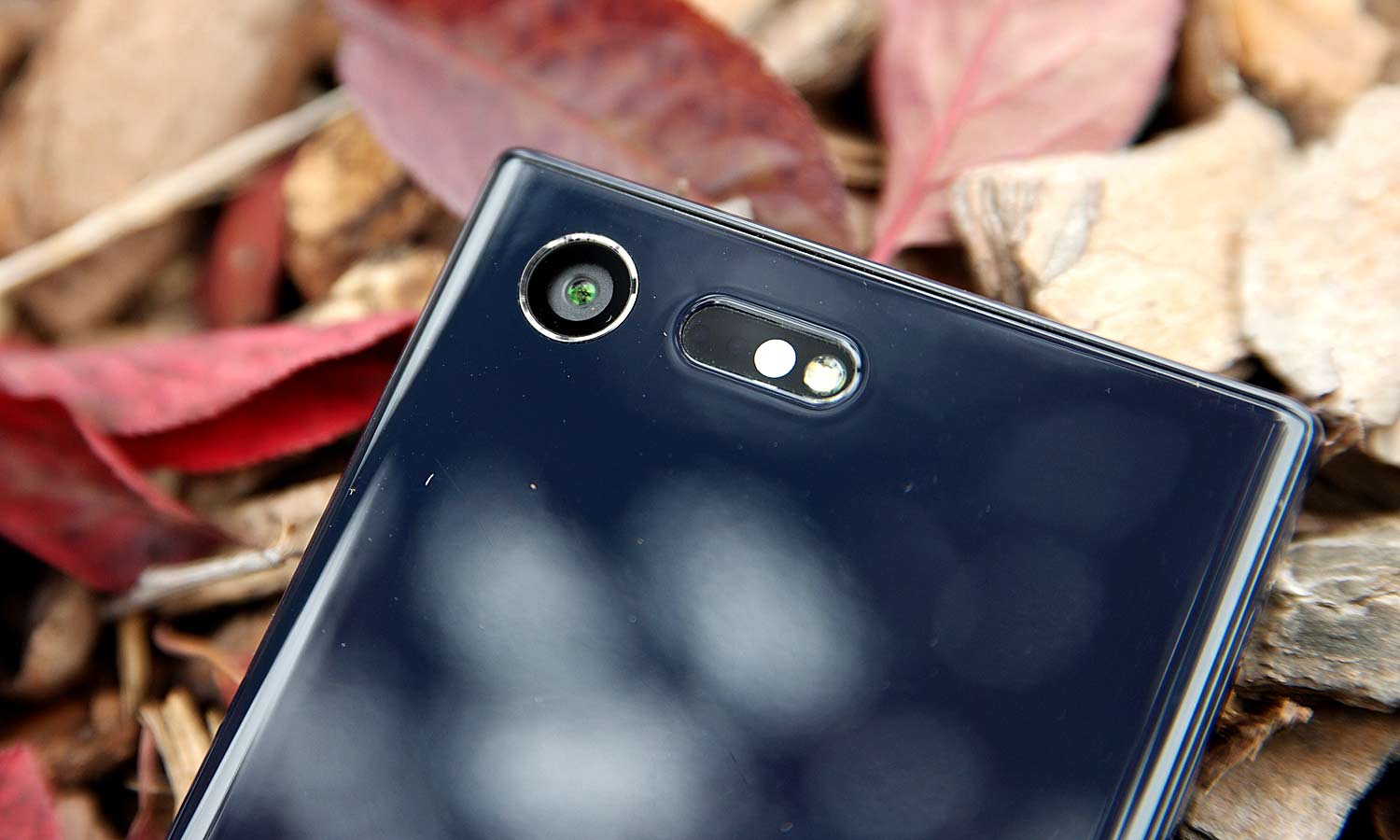
The Xperia X Compact comes with 3GB of RAM and 32GB of internal storage. It's expandable up to 256 GB with a microSD card, but you can't put one in or swap one out without taking out the SIM card, which goes into the same slot.

The Xperia's screen is made of Gorilla Glass, which is reassuring for the clumsy. But unlike some of the early Xperia models, this phone isn't waterproof, so you may want to be extra careful when you're outside in the rain — or if you bring it to the bathroom.
Notably, Sony combines the volume and ringer controls into a single rocker instead of giving them separate buttons. That's a small detail, but it can be annoying for those who prefer distinct controls.
MORE: Best Smartphones on the Market Now
Get instant access to breaking news, the hottest reviews, great deals and helpful tips.
Display and Sound
The Xperia X Compact sports a vivid 4.6-inch display, though at a modest 1280 x 720 resolution, so you can't watch full-HD video. But it general, photos and videos looked stunning and crisp — quality that you'd expect from a company that specializes in TVs and monitors.
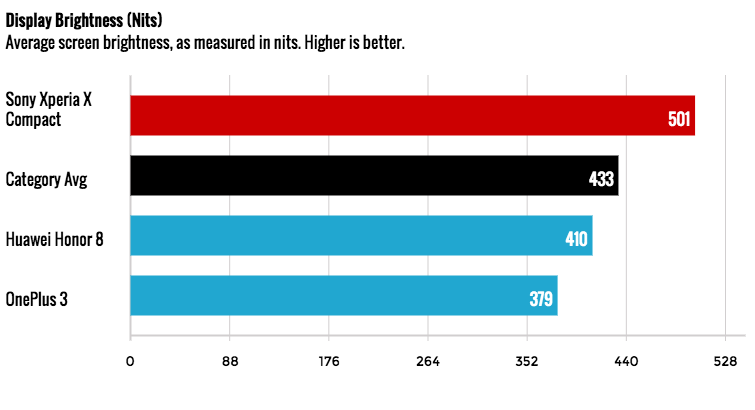
Using a light meter, we measured the brightness of the Xperia X Compact's display at 501 nits, which was better than the 433-nit average for smartphones. That number also tops phones in the Xperia's price range, such as the Honor 8 (410 nits) and OnePlus 3 (379 nits).
When I watched the trailer for Star Trek Beyond on YouTube, colors really popped. Video transitions where the screen went black made it look like the phone was actually off. I found myself holding the phone closer to my face to pick out details that I would normally be able to easily see on a phone with a larger screen, but that's an issue you'd have with any small phone.
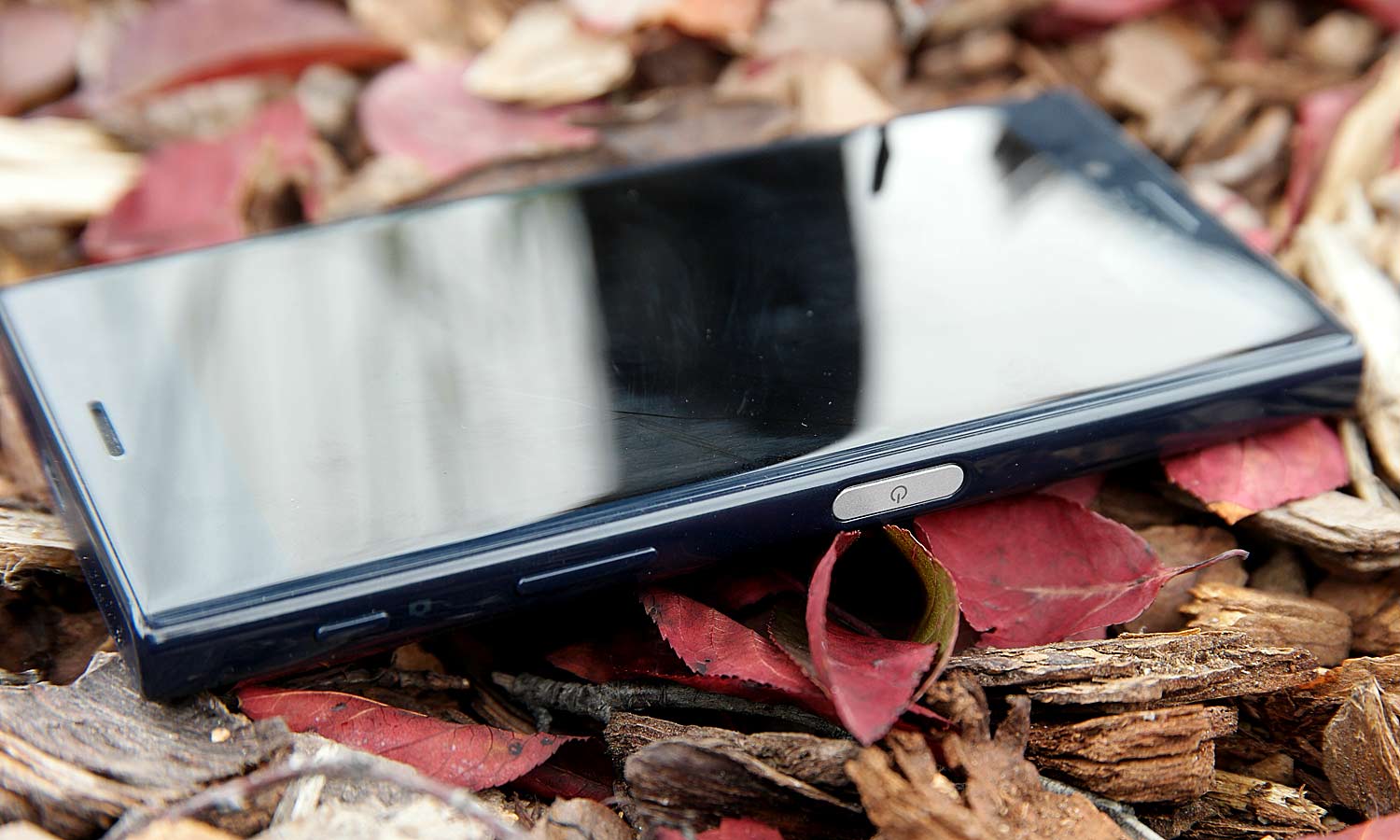
The Xperia X Compact plays high-res audio with features such as digital noise canceling and front surround sound. But when I used it to watch videos on a TV news channel's website in a Chrome browser with the sound on, recorded voices seemed muffled, and humming and numerous conversations picked up from a busy background were more noticeable on the Xperia than on the Honor 8.
Camera
Cameras have been the calling card for Sony's Xperia X lineup, and the Compact is no exception, as it features a 23-megapixel rear camera, nearly double the 12-MP camera on the Honor 8. But there's more than megapixels to the Compact's camera. The Xperia X Compact also features five-axis image stabilization — a major improvement over earlier phones in the Xperia lineup, thanks to technology developed for and first used in Sony's a7 II camera. Add in a predictive autofocus feature and triple-image sensing technology, and blurry photos should be a rarity with the X Compact. Unfortunately, shots we took under challenging conditions weren't as good as what we expected.

Comparing photos shot by the X Compact's camera to those we captured with the Honor 8, an outdoor shot of pink roses on a cloudy day looked true to life with Sony's camera. The Honor 8 seemed to boost the shot's color saturation. While it was less realistic, the Honor 8 photo looked a bit prettier

A wide shot of trees and benches in New York's Union Square Park that I took with the Xperia looked very close to the colors and brightness I saw with my own eyes. Natural light bounced off leaves and painted metal reflected the cloudy sky. Again, the Honor 8 seemed to boost the image's saturation and accentuate highlights and shadows, making a cloudy day seem brighter.
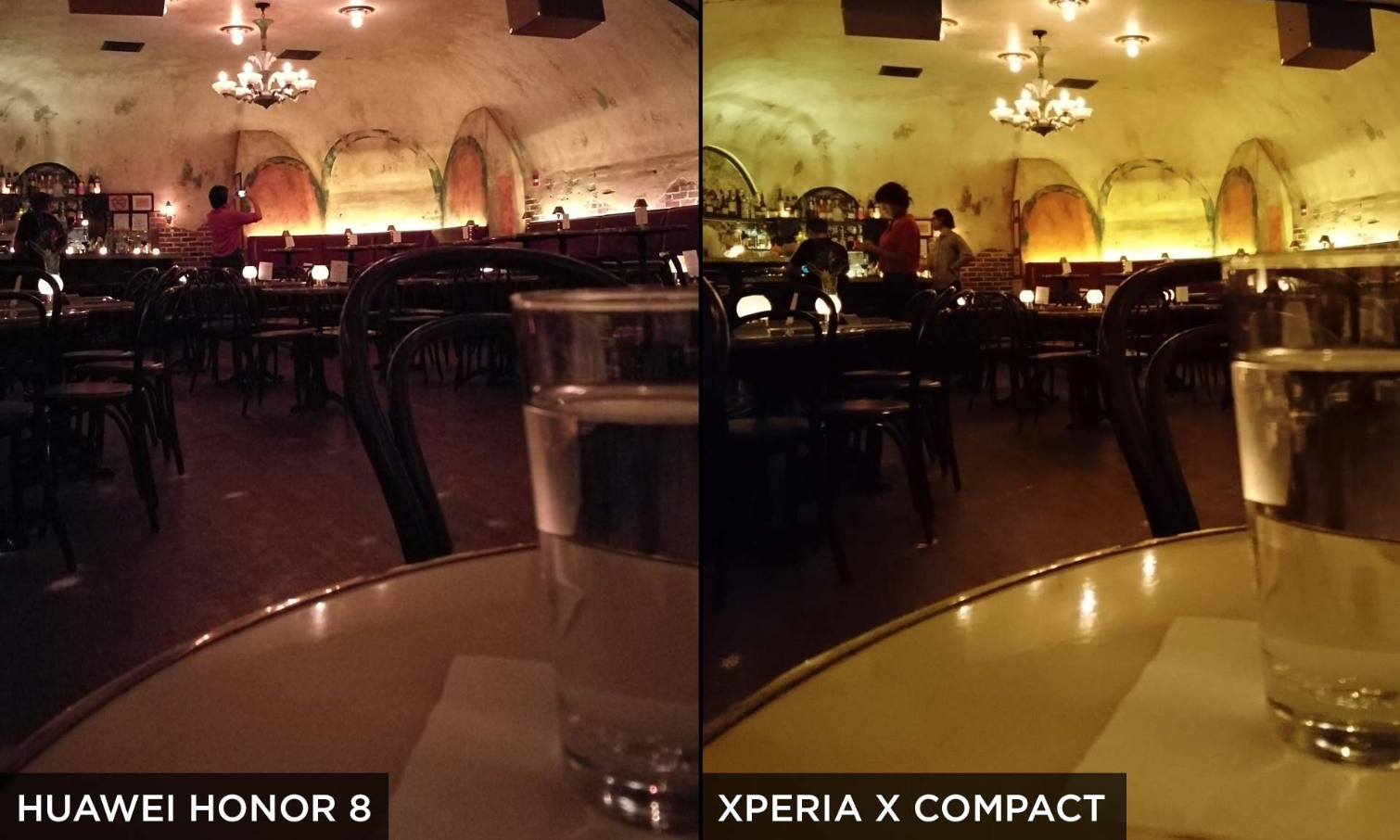
But in low-light conditions, shots taken with the Xperia X Compact came out too warm, turning beige walls dramatically more yellow. There's a camera setting that lets you quickly adjust color temperature and brightness, but it's an extra step that a user shouldn't have to take.

We challenged the Xperia X Compact by taking pictures of former New York Dolls singer David Johansen, no more than 30 feet away, in the dimly lit cellar lounge of the Roxy Hotel in Manhattan. He was moving, though not in an extreme way. Shots with the Xperia still came out yellow and blurry, indicating that the camera's predictive autofocus didn't work well in dim light at a distance. Shots taken under the same conditions with the Honor 8 didn't look any blurrier than the Xperia shots, and colors were more accurate.
MORE: These Smartphones Can Replace a Compact Camera
The Xperia X Compact does offer some convenient and fun photo features. A smile shutter feature will wait to snap a picture until you smile with your teeth showing. You can also shoot videos with filters instead of applying them in editing after you shoot, which could cut one step out of the process of posting to Instagram.

The 5-MP front-camera shot selfies that revealed fine details, for better or for worse — more so than the Honor 8's front camera. For users who'd rather hide their wrinkles and other imperfections, there's a "soft skin effect" in the Xperia X Compact's camera settings. But there's only an on/off switch, and not a slider to adjust how much more flattering or realistic you want your selfie to be. The Xperia's soft-skin effect was fairly modest compared to what you could achieve with similar effects on other camera phones.
The Xperia X Compact's souped-up camera stabilizes video for action, close-up and macro shots, according to Sony, but our shots in low light at a distance left a lot to be desired.
While you might want to stick with daylight or normal indoor lighting, you can record video in 1080p at up to 60 frames per second, which is great if you want to edit action shots to run in slow motion, for instance.
Battery Life
The Xperia X Compact has a 2700-mAh battery with Quick Charge 3.0. On the Tom's Guide battery test, which involved surfing the web over T-Mobile's LTE network, this phone lasted 11 hours and 4 minutes. That blows away the endurance of the Honor 8, which clocked in at 7:11, and the OnePlus 3, which lasted 8:33. The average smartphone lasts 8:54 on our test, so the Xperia X Compact is definitely a good choice if you want an all-day performer.
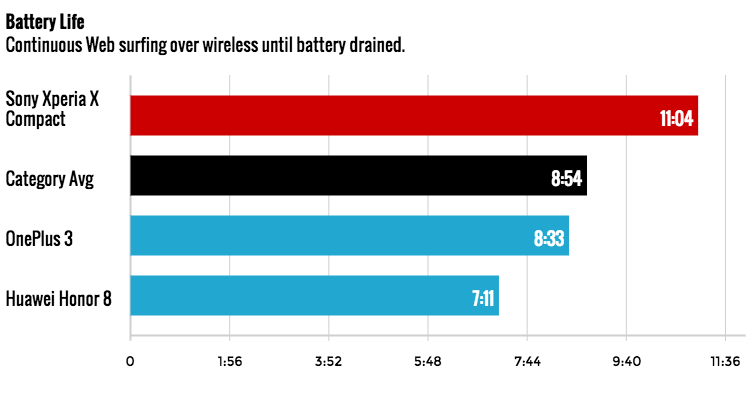
The Xperia uses adaptive charging, which can help keep your battery's life span from declining over time. According to Sony, with adaptive charging, the phone learns your charging patterns and adapts to them. By making sure your battery charges to 100 percent only by the time you need to take it off the charger instead of having it remain at 100 percent overnight, which can damage the battery, Sony says the Xperia X Compact battery could have twice the lifespan of batteries in other smartphones.
MORE: Smartphones with the Longest Battery Life
Performance
Sony uses a Snapdragon 650 processor to power the Xperia X Compact. That's a curious choice for a $499 phone, when you'll find more powerful processors in less expensive devices. Both the OnePlus 3 and ZTE Axon 7 use a Snapdragon 820, and those phones cost $100 less than what Sony charges for the Xperia X Compact. The Honor 8, also $100 cheaper, uses Huawei's own Kirin 950 CPU — another chip that's more powerful than the Snapdragon 650.
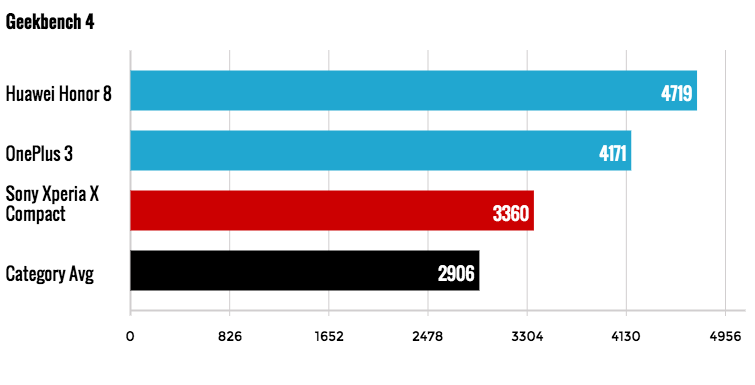
The Geekbench 4 performance test shows the impact of Sony opting for less processing oomph. The Xperia X Compact scored 3,360. That's far below the 4,719 the Honor 8 turned in. The OnePlus 3 also finished ahead of the Xperia with a score of 4,171.
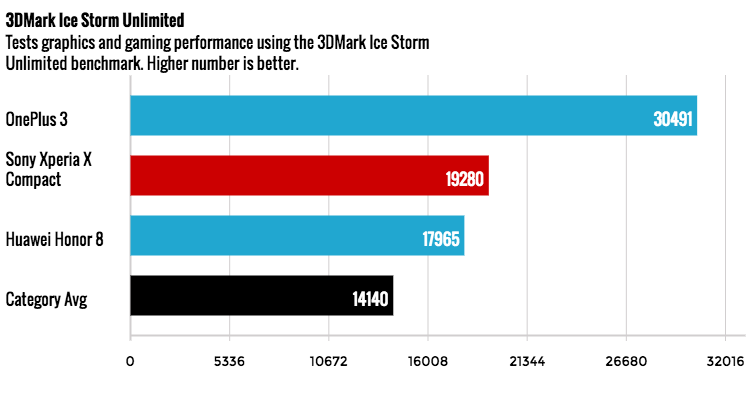
As far as the ability to handle intense graphics compared to competing phones, the Xperia scored 19,280 in our 3DMark Ice Storm Unlimited test. That's a bit higher than the Honor 8's score of 17,965 and ahead of the average smartphone (14,140). Both of those phones were blown away by the OnePlus 3, which scored 30,491.
Nevertheless, I didn't notice any sluggishness or stalling with the Xperia when working within apps or switching between them. And when I tested the cameras on both the Xperia and the Honor 8, neither seemed to spring to life faster than the other.
Bottom Line
Sony's Xperia X Compact has a bright, beautiful display that's easily viewable outdoors on a sunny day. The phone's 11-hour battery life impresses, and its compact size makes it easy to hold and use with one hand.
Still, $500 is a lot to pay for a phone whose camera doesn't perform as well in low light as Sony promises. It's also not as speedy as phones that are cheaper. Overall, we prefer the Honor 8 and OnePlus 3, both of which cost $100 less than the compact Xperia. But if you value battery life in a compact design, Sony's latest phone may fit the bill.
Althea Chang is Associate Director of Content Development for Consumer Reports and was previously a Senior Writer for Tom's Guide, covering mobile devices, health and fitness gadgets and car tech.
-
Pacinamac It does not have real 5 axis image stabilization. It's software based. And uses 3 axis unless in macro video mode.Reply -
727stretch Too bad, unlike the prior Z Compacts, this one doesn't use the same strong processor as the full-size Sony flagships. Oh well, it's just another dumbed down compact phone. When will we get a flagship-spec'd smaller phone???? Guess I'll be keeping my Z5 Compact till it croaks.Reply
